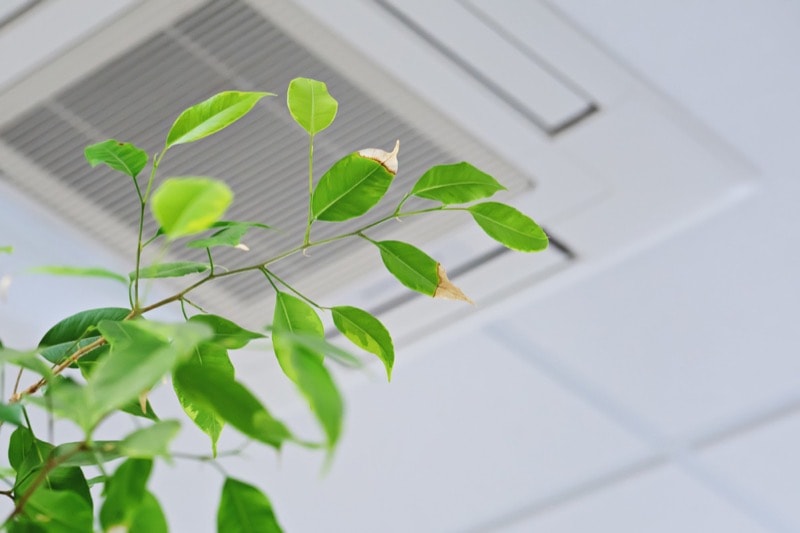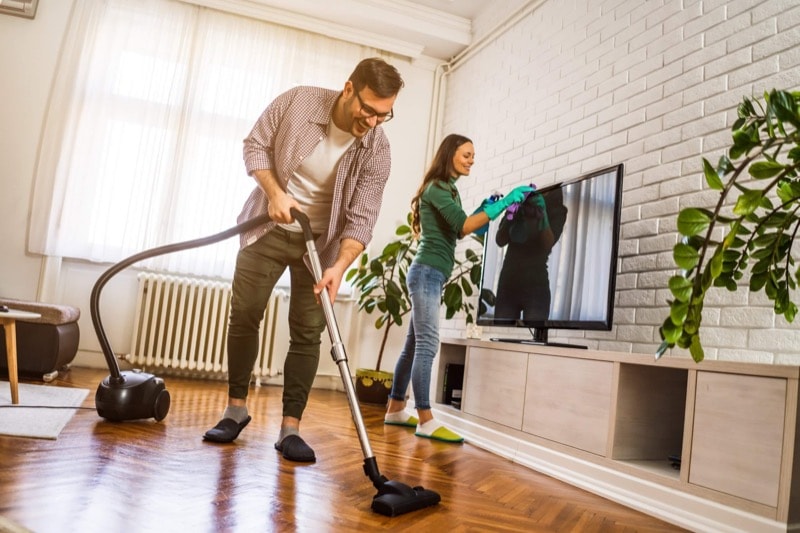Be smart to find the better ways. It’s a bit of a paradox. As summertime weather approaches we look forward to being outside more, but the reality of the season’s heat and humidity forces us to spend more time indoors instead. And while we associate poor air quality with a smoggy day, car exhausts, or industrial pollution, the truth is that our indoor quality is often just as bad or worse than what we encounter outside.

According to the EPA: “Americans, on average, spend approximately 90 percent of their time indoors, where the concentrations of some pollutants are often 2 to 5 times higher than typical outdoor concentrations.”
When we consider these realities it only makes sense to take action to make our home’s indoor air quality as good as possible. There are many ways to achieve this — let’s examine seven smart ways to improve your home’s indoor air quality.
The modern home’s HVAC system is a two-sided sword. Sometimes our central heating and air conditioning system can be at the root of problems, particularly if the system’s ducts are dirty, or mold has gotten into them. However, your HVAC system can also serve as the center of your air-quality improvement project through the addition of a whole-home air purifier. Here are a few of the things that whole-home air purifiers can do:
A whole-home air purifier may not be as expensive as you think and can provide real benefits in improving your home’s air quality.
Even without adding a whole-home air purifier, your current HVAC system can probably do more to keep your air cleaner than you thought. If you’re not changing the system’s air filters regularly, get in the habit of doing so. And an investment in higher-quality filters can make a big difference as well.
Don’t forget the other air filters in your home too! If you haven’t changed the bag in your vacuum cleaner recently, and consider stepping up to HEPA quality bags to cut down on dust and particulate distribution. Likewise, be sure filters for portable air filters and other similar devices are changed on a regular schedule.
One of the major sources of indoor air pollutants is inside your home — your HVAC system’s ducts. Your ducts can be a repository for dirt, dust, animal dander, rodent droppings, mold, and more. If you have an older home, consider how many years your ducts may have been harboring these sources of airborne pollution and distributing it around your home.
The smart solution is to have your home’s HVAC ducts professionally inspected and cleaned on a regular basis. Not only will the cleaning reduce pollutants in your home, but clean ducts will distribute air more efficiently, reducing the load on your system and saving you money as well.
The summer months bring high humidity levels to the outside. And that will increase the humidity levels in your home as well. If the air in your home is damp, there’s an increased possibility of creating conditions that allow the growth of mold. And this mold can be a major respiratory irritant.
You can control the humidity in your home by employing portable dehumidifiers throughout your home. While this is a relatively inexpensive option, these portable units can be noisy and require you to empty their catch basins on a regular basis. A smarter alternative is to have a whole-home dehumidifier installed in your HVAC system. It will work in the background to keep the humidity level in your home under control all the time, with no attention required from you.
The exhaust fans in your home’s bathroom remove moisture and help inhibit the growth of mold and mildew. All too often, however, these fans can become clogged with dust and don’t operate at peak efficiency. Make it a habit to remove the cover of the fan several times a year and vacuum out dust and debris to keep it clear. You may also want to consider replacing the existing exhaust fan with a higher performance model if the existing fan doesn’t clear moisture out of the bathroom quickly.
Your kitchen is probably the heart of your home. But did you know that it’s a major source of indoor pollution too? Cooking, especially with a gas stove, can release high levels of pollutants, and even cleaner electric range tops will produce smoke and particulates when you cook on them. Try these quick tips to improve kitchen ventilation.
It won’t do much good to invest in air purifying gear for your home if you don’t take the time to keep it clean. Eventually, allergens like pet dander, dust, and chemical residue will settle on your home’s floors, in your carpets, and upon upholstery and other surfaces.

The solution to this is simply good old-fashioned cleaning. Be sure to vacuum and mop floors regularly, using a good vacuum cleaner and gentle cleaning solutions. Be sure to vacuum upholstered furniture and drapes as well. Establishing a regular routine for house cleaning will remove pollutants from your home and out of the air.
Your home is your comfortable refuge away from many of the challenges we’re facing during these trying times. Make sure that it’s a healthy place for your family as well. By adopting regular cleaning habits and making a few upgrades to your HVAC system, you can do a lot to make that happen.
If you need professional help remember getting a quote is free! Our qualified and licensed HVAC professionals are here to help!

I like that you mentioned how keeping your windows open while you are cooking can prevent pollutants from accumulating in your kitchen. My brother is excited to host a dinner party for some of his neighbors next weekend, but he has recently started to find out that some of them have been getting sick with colds this week. Maybe he should find a way to help prevent germs from spreading in his home.
Thanks for providing such great tips! Getting wooden flooring can also help improve air quality. They usually do not harbor allergens, microorganisms, or harmful chemicals.